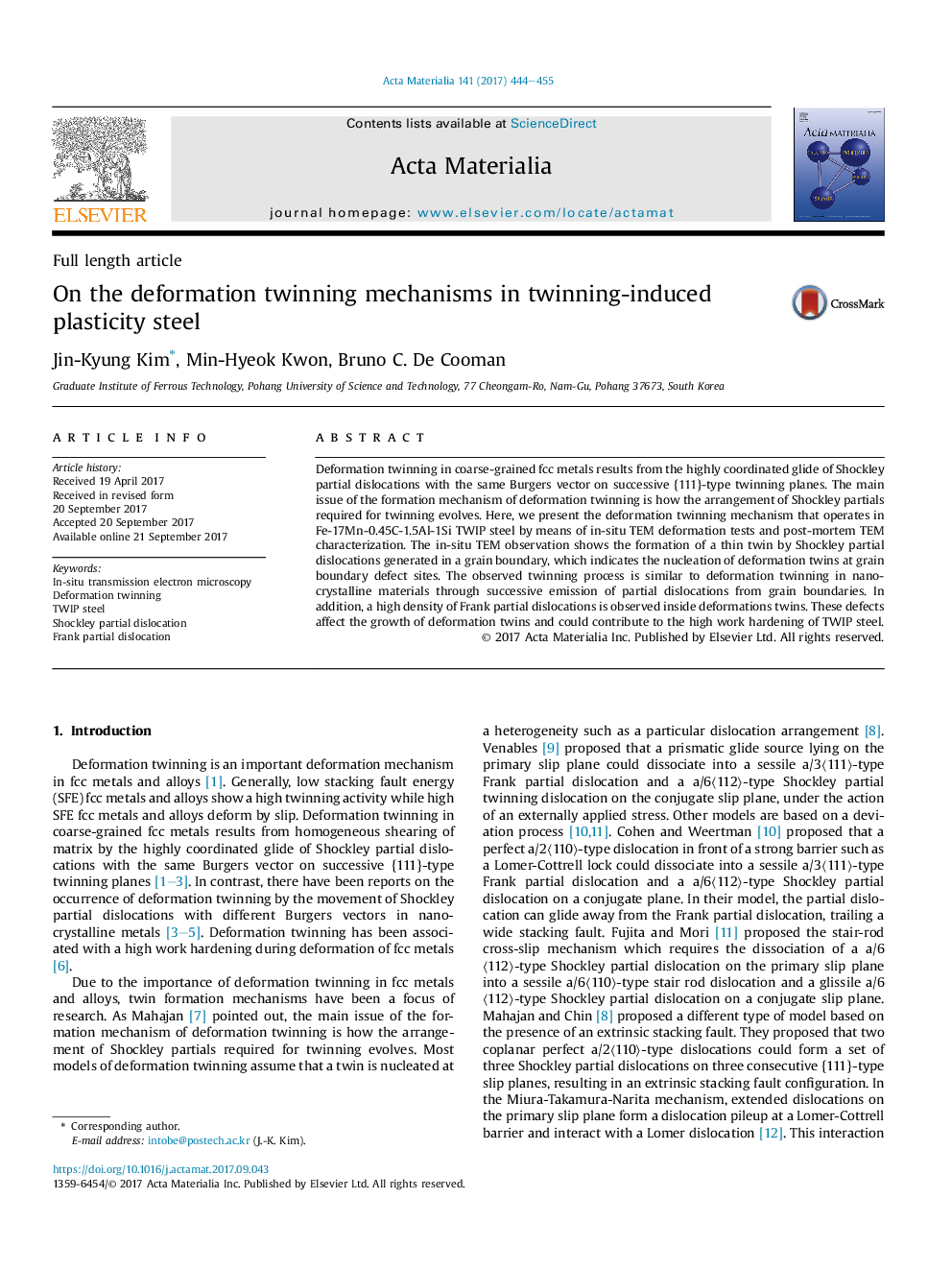| Article ID | Journal | Published Year | Pages | File Type |
|---|---|---|---|---|
| 5435742 | Acta Materialia | 2017 | 12 Pages |
Deformation twinning in coarse-grained fcc metals results from the highly coordinated glide of Shockley partial dislocations with the same Burgers vector on successive {111}-type twinning planes. The main issue of the formation mechanism of deformation twinning is how the arrangement of Shockley partials required for twinning evolves. Here, we present the deformation twinning mechanism that operates in Fe-17Mn-0.45C-1.5Al-1Si TWIP steel by means of in-situ TEM deformation tests and post-mortem TEM characterization. The in-situ TEM observation shows the formation of a thin twin by Shockley partial dislocations generated in a grain boundary, which indicates the nucleation of deformation twins at grain boundary defect sites. The observed twinning process is similar to deformation twinning in nano-crystalline materials through successive emission of partial dislocations from grain boundaries. In addition, a high density of Frank partial dislocations is observed inside deformations twins. These defects affect the growth of deformation twins and could contribute to the high work hardening of TWIP steel.
Graphical abstractDownload high-res image (387KB)Download full-size image
